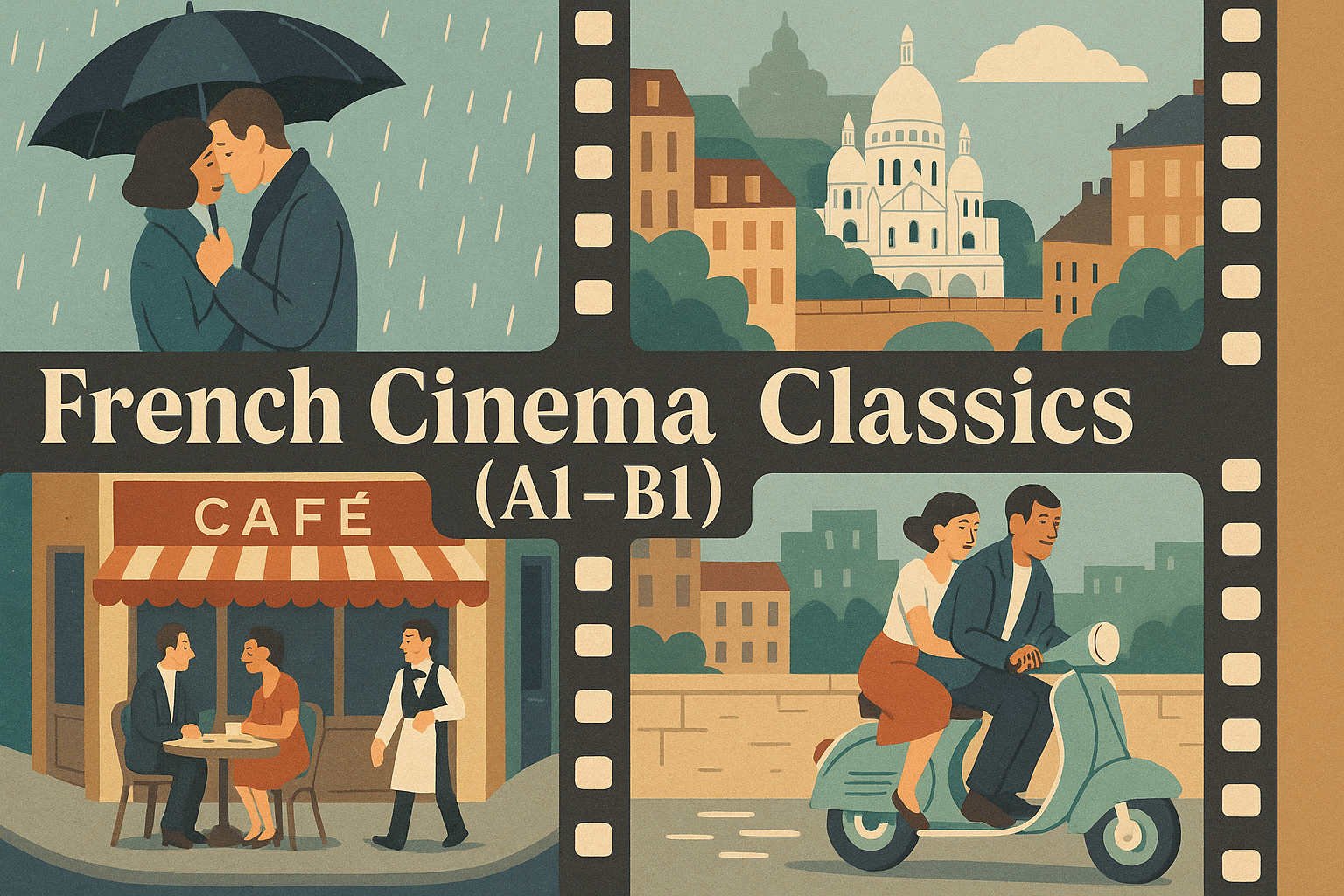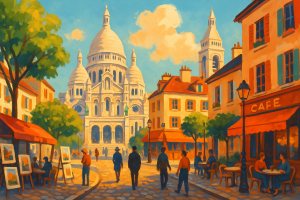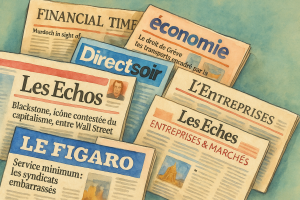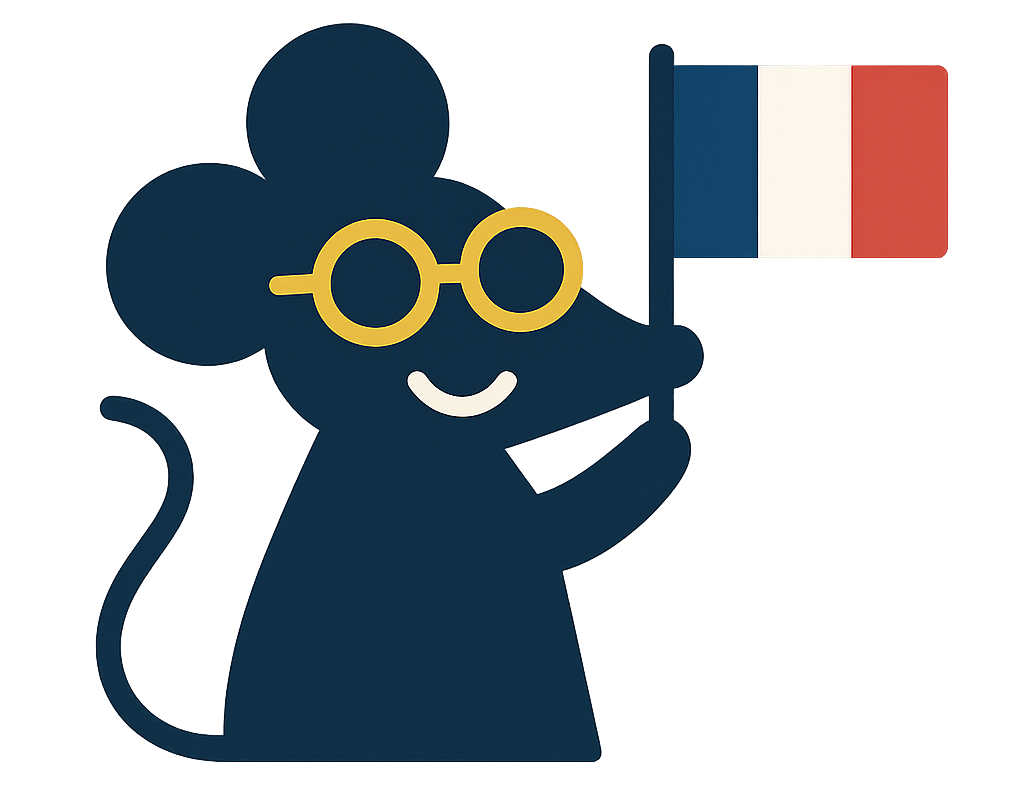French cinema classics (A1–B1) — learn French through movies
French cinema classics offer clear speech, rich culture, and memorable stories. In this A1–B1 guide, you’ll travel from the Lumière brothers to the New Wave to modern hits, learning everyday lines with IPA and translations so you can watch confidently and grow real-world vocabulary.

Why French cinema matters for language learners
French cinema offers language learners unique advantages unavailable through textbooks or traditional classroom materials. Films present authentic dialogue in natural contexts—conversations unfold at realistic speeds, characters use contemporary vocabulary, and cultural references emerge organically rather than through artificial insertion. This authenticity accelerates acquisition by exposing you to patterns, reductions, and intonations that native speakers actually employ in daily life.
Cinema provides emotional engagement that enhances memory retention. Memorable scenes create mental anchors for vocabulary and phrases, making recall easier during real conversations. When you remember Amélie’s playful narration or The 400 Blows’ raw adolescent dialogue, you’re simultaneously recalling linguistic patterns embedded in those moments. This emotional-linguistic connection strengthens retention more effectively than rote memorization.
French films also deliver cultural literacy alongside language skills. Understanding references to May 1968, appreciation for nouvelle vague aesthetics, or recognition of iconic directors builds conversational currency with French speakers who value cinema deeply as cultural heritage. This knowledge creates rapport and demonstrates genuine interest in French culture beyond tourist superficiality.
1) A quick history: from the first films to today
French cinema begins with the Lumière brothers in 1895 and early short documentaries that simply showed life moving—workers leaving a factory, a train arriving—then grows through poetic realism in the 1930s with atmospheric stories of love and fate, breaks patterns with the bold Nouvelle Vague in the late 1950s–60s, and keeps renewing itself with sharp comedies, tender dramas, and global co-productions that make everyday French speech easy to hear across decades.
Early cinema and poetic realism
The Lumière brothers’ first screenings stunned audiences accustomed to static photography. Moving images of ordinary life—a train arriving at La Ciotat station, workers leaving the Lumière factory—demonstrated cinema’s revolutionary potential. These simple recordings captured authentic French society at the turn of the century, preserving speech patterns, gestures, and social interactions for future study.
Poetic realism emerged during the 1930s, combining gritty working-class settings with romantic fatalism. Directors like Marcel Carné and Jean Renoir created films where dialogue balanced literary quality with vernacular authenticity. These works provide excellent listening practice because characters articulate clearly while maintaining natural rhythm—slower than contemporary speech but more genuine than theatrical declamation.
The French New Wave revolution
The Nouvelle Vague transformed cinema in the late 1950s and early 1960s. Directors like François Truffaut, Jean-Luc Godard, and Agnès Varda rejected studio conventions, filming on location with natural lighting and improvised dialogue. This approach captured authentic Parisian street French—incomplete sentences, interruptions, colloquialisms—that textbooks rarely teach but natives use constantly.
New Wave films feature young characters discussing relationships, politics, and culture in cafés and apartments. Their conversational style provides perfect models for learners seeking contemporary informal French. The deliberate pacing allows comprehension without sacrificing authenticity, making these classics ideal intermediate-level resources.
Contemporary French cinema
Modern French cinema maintains high production values while exploring diverse themes and communities. Films like Intouchables showcase register shifts between formal and casual speech. Amélie demonstrates clear narration alongside playful dialogue. Documentary works like Être et avoir present unscripted educational interactions with remarkable clarity.
Contemporary cinema also reflects France’s multicultural reality, presenting regional accents, immigrant experiences, and generational differences. This diversity exposes learners to linguistic variety they’ll encounter in real France rather than idealized textbook French. Understanding these variations builds practical competence for authentic interactions.
2) Mini-scenes for learners (A1→B1)
Use films as friendly listening labs: pick one short moment, watch with French audio and French subtitles, and focus on 1–2 useful lines you can reuse in cafés, transport, or small talk.
🇫🇷 FR — Silence, ça tourne ! /silɑ̃s sa tuʁn/
🇺🇸 EN — Quiet on set, we’re rolling!
🇫🇷 FR — Ça te dit un film ce soir ? /sa tə di œ̃ film sə swaʁ/
🇺🇸 EN — Fancy a movie tonight?
🇫🇷 FR — On se retrouve à l’entrée. /ɔ̃ sə ʁətʁuv a lɑ̃tʁe/
🇺🇸 EN — Let’s meet at the entrance.
🇫🇷 FR — Tu as pris les billets ? /ty a pʁi le bijɛ/
🇺🇸 EN — Did you get the tickets?
3) Classics to watch for clear French
These titles balance cultural impact and accessible speech; watch 10–15 minutes at a time, repeat favorite lines, and imitate rhythm rather than speed.
Les Quatre Cents Coups (The 400 Blows, 1959)
François Truffaut’s semi-autobiographical masterpiece follows a troubled Parisian adolescent through school, home, and streets. The dialogue features simple everyday exchanges—classroom interactions, family meals, conversations with friends—delivered at moderate pace. Young characters speak naturally without theatrical affectation, providing excellent models for basic French sentence structures and pronunciation patterns.
Amélie (Le Fabuleux Destin d’Amélie Poulain, 2001)
Jean-Pierre Jeunet’s whimsical romance combines clear narration with accessible dialogue. Amélie’s café scenes demonstrate polite service interactions while her internal monologues showcase descriptive vocabulary. The film’s deliberate pacing and Audrey Tautou’s crisp diction make it ideal for A1-A2 learners seeking comprehensible input without sacrificing authentic French flavor.
La Gloire de mon père (My Father’s Glory, 1990)
Yves Robert’s adaptation of Marcel Pagnol’s memoirs presents slower-paced narration describing Provence childhood memories. Nature vocabulary, family conversations, and nostalgic descriptions provide rich listening material. The film’s gentle rhythm suits learners uncomfortable with rapid urban dialogue, offering breathing room for comprehension and repetition practice.
Intouchables (The Intouchables, 2011)
This modern comedy-drama showcases register contrasts between formal bourgeois French and casual suburban slang. The relationship between wealthy Philippe and working-class Driss creates natural opportunities for code-switching and register explanation. Learners observe how context determines vocabulary and pronunciation choices—essential skills for navigating diverse French social situations.
Être et avoir (To Be and To Have, 2002)
Nicolas Philibert’s documentary follows a rural one-room schoolhouse through an academic year. Teacher-student interactions provide exceptionally clear French as the instructor articulates carefully for young children. These exchanges model patient, supportive communication styles useful when practicing French with native speakers willing to accommodate learner needs.
4) Reusable A1–B1 lines from movie nights
🇫🇷 FR — Je peux avoir des sous-titres en français ? /ʒə pø avwaʁ de sutitʁ ɑ̃ fʁɑ̃sɛ/
🇺🇸 EN — Can I have subtitles in French?
🇫🇷 FR — C’était trop rapide, tu peux répéter ? /sete tʁo ʁapid ty pø ʁepete/
🇺🇸 EN — That was too fast, can you repeat?
🇫🇷 FR — J’ai adoré la musique. /ʒe adɔʁe la myzik/
🇺🇸 EN — I loved the music.
🇫🇷 FR — C’était un film touchant. /sete œ̃ film tuʃɑ̃/
🇺🇸 EN — It was a touching film.
🇫🇷 FR — Les acteurs étaient excellents. /lez‿aktœʁ ete ɛksɛlɑ̃/
🇺🇸 EN — The actors were excellent.
5) A gentle study method for films
Step 1: Choose a manageable clip (2–4 minutes)
Select scenes with clear dramatic focus—a café conversation, a phone call, someone ordering food. Avoid action sequences where dialogue competes with sound effects. Watch once with French audio and French subtitles, noting three unfamiliar words and one complete sentence that interests you.
Step 2: Shadow the dialogue
Whisper the chosen line once to feel the mouth movements without pressure. Then speak it twice attempting to match the actor’s rhythm, intonation, and emotional tone. This shadowing technique builds pronunciation muscle memory more effectively than reading aloud from text because you’re mimicking authentic prosody patterns.
Step 3: Rewatch without subtitles
Listen for liaison sounds where words connect, reductions where syllables soften, and pauses where speakers breathe. Pause after each phrase and echo it, focusing on reproducing the natural flow rather than perfect individual word pronunciation. This chunking approach mirrors how natives process speech in meaningful units.
Step 4: Apply in real life
Bring one line from your clip into actual conversation within twenty-four hours. Use “On se retrouve…” when meeting friends, “Ça te dit…” when suggesting activities, or “J’ai adoré…” when discussing experiences. This immediate application transforms passive recognition into active production, cementing the phrase in your working vocabulary.
6) Culture snapshots: understanding French film aesthetics
Early screenings by the Lumière brothers amazed audiences because everyday scenes—exiting a factory, a train pulling in—looked like living windows, and that everyday gaze survives in French cinema: a camera that loves streets, cafés, and quiet moments, which is perfect for learners who want the rhythm of real life in short, repeatable scenes.
Later, the New Wave kept that everyday energy but added freer camera work and open endings, so you hear conversations that sound improvised and modern. Directors filmed actors walking through actual Paris neighborhoods, capturing genuine street noise, café ambiance, and metro sounds that textbooks cannot replicate. This authenticity makes New Wave films valuable listening laboratories where language and setting merge naturally.
Today, you can find clear diction in family dramas, documentaries, and comedies where characters negotiate plans, express feelings calmly, and order food—exactly the language you need this week. Contemporary French cinema balances artistic ambition with accessibility, producing works that entertain while inadvertently teaching practical vocabulary and cultural literacy.
7) Practical tips for film-based learning
Subtitle strategy
Always use French subtitles rather than English when learning through film. French subtitles train your eye-ear connection, helping you associate sounds with spellings. English subtitles encourage passive watching where you read translations instead of processing French sounds. This defeats language acquisition purposes even though it feels easier initially.
Manageable chunks
Never attempt watching entire films in one sitting while actively learning. Divide films into ten-minute segments, watching each segment three times: once for comprehension, once focusing on pronunciation, once without subtitles testing understanding. This intensive approach builds skills faster than passive viewing of complete features.
Genre selection
Match film genres to your proficiency level. A1 learners benefit from animated films with simple vocabulary. A2 learners handle contemporary comedies with clear dialogue. B1 learners tackle classic dramas with literary language. Choosing appropriately challenging material maintains motivation while ensuring comprehensibility.
Study glossary (FR → IPA → EN)
| FR | IPA | EN |
|---|---|---|
| La Nouvelle Vague | /la nuvɛl vag/ | French New Wave |
| Un classique | /œ̃ klasik/ | A classic |
| Un réalisateur | /œ̃ ʁealizatœʁ/ | Director |
| Une réplique | /yn ʁeplik/ | Line (dialogue) |
| Des sous-titres | /de sutitʁ/ | Subtitles |
| Un plan | /œ̃ plɑ̃/ | Shot |
| Le montage | /lə mɔ̃taʒ/ | Editing |
| La bande-son | /la bɑ̃d sɔ̃/ | Soundtrack |
| Un documentaire | /œ̃ dɔkymɑ̃tɛʁ/ | Documentary |
| Un doublage | /œ̃ dublaʒ/ | Dub |
| La VO (version originale) | /ve.o/ | Original version |
| Une salle de cinéma | /yn sal də sinema/ | Movie theater |
| Un acteur/une actrice | /œ̃n‿aktœʁ/yn aktʁis/ | Actor/Actress |
| Le scénario | /lə senaʁjo/ | Script/Screenplay |
Authoritative references
- La Cinémathèque française — history, exhibitions, archives.
- Centre national du cinéma (CNC) — official resources and data.
Learn French with Roger, Native French Tutor
Expert instruction with proven teaching methods. Personalized lessons tailored to your goals from A0 to C1.
Weekly Lessons with Roger
Learn with Roger, a native French tutor. Structured curriculum from beginner to advanced.
- Native French speaker from France
- All levels (A0-C1) supported
- Personalized curriculum
- Proven teaching methodology
Trial Lesson with Roger
Experience Roger’s teaching method with a 25-minute trial session. Perfect to get started.
- 25 minutes with Roger
- Level assessment included
- Personalized learning roadmap
- No commitment required
A1 Foundations Guide
Complete beginner’s guide created by Roger. Structured lessons with native pronunciation.
- Step-by-step A1 curriculum
- Audio by native French speaker
- Practice exercises included
- Learn at your own pace
Continue Learning
Check out these related articles

Exploring Montmartre culture (A1–B1) — art, cafés, viewpoints
Learn A1–B1 French for Montmartre: polite greetings, café ordering, directions, art talk, and viewpoint tips—bilingual lines with IPA and a…

Buying train tickets in french (A1) — counters, machines, seats
Buying train tickets in french becomes easy with a clear model. In this A1 guide, you’ll learn counter phrases, ticket-machine…

French news phrases (A1–B1) — read headlines with confidence
Decode French headlines and short news clips with simple A1–B1 phrases, clear IPA, and practical strategies for reading fast, real-world…
👋 Join Our Community
Follow us for daily tips, pronunciation tricks, and free resources
👍 Follow on Facebook